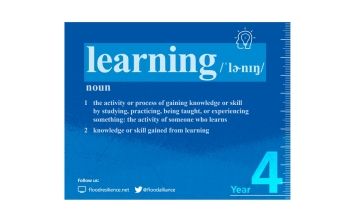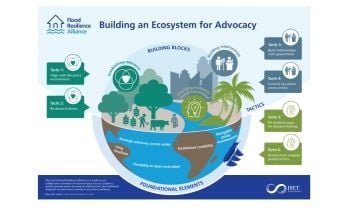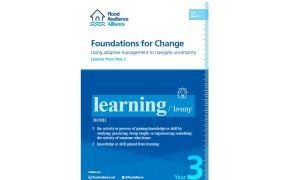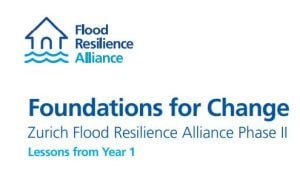
Read our 2024 annual report

Knowledge Hub
Foundations for change: Lessons from Year 4 of the Zurich Flood Resilience Alliance project - Building Ecosystems for Advocacy
This report — presenting lessons from Year 4 of Phase II of the Zurich Flood Resilience Alliance — consists of a tip sheet and supporting case studies for conducting successful advocacy.
We find that strategic advocacy, combined with evidence of local risk, needs, and ways forward, can support the uptake of new practices, approaches and policies that support local resilience.

This report presents lessons from Year 3 of Phase II of the Zurich Flood Resilience Alliance community engagement, learning, research, and advocacy work. The report focuses on how the Alliance structure and culture have allowed us to adaptively manage to ensure continued focus on flood resilience and progress toward our goals, while also addressing COVID-19 needs and concerns..
An ecosystem for successful advocacy
The report describes the layers the Alliance considers are required for successful advocacy:
Layer 1 - Foundational Elements
The success and selection of appropriate advocacy tactics to achieve a defined advocacy goal depends on the local to national enabling environment. The foundational elements of an enabling environment include:
- A navigable policy environment
- Long time lines
- Flexibility to learn, adapt, and seize opportunities
- Established credibility
- Strategic advocacy at all levels
Layer 2 - Building blocks
To conduct successful advocacy within a particular context or enabling environment, teams need to put the following building blocks in place:
- Establishing relevance
- Building relationships
- Providing evidence-based knowledge
Layer 3 - Tactics and activities
Layer 3 is the operational layer, or what is needed to generate and transform relevance, relationships and evidence-based knowledge into successful changes in policy, spending and practice. These are presented in the report as a series of tactics linked to the elements outlined in Layer 1 and Layer 2.
- Tactic 1 - Align your advocacy strategy with the policy environment
- Tactic 2 - Be demand-driven in defining your advocacy focus and approach
- Tactic 3 - Build and maintain relationships with government actors who are instrumental for shaping relevant policies, spending, or practice related to your advocacy goal or objective
- Tactic 4 - Connect key actors across sectors to develop shared understandings of your target advocacy issue
- Tactic 5 - Fill evidence gaps to support decision-making related to your advocacy goal or objective
- Tactic 6 - Develop and document tangible good practices that address local resilience needs and support your advocacy goal or objective

Resources
The Year 4 Learning Report can be downloaded from the Zurich Flood Resilience Alliance Portal. The case study from Concern's work in Bangladesh can also be viewed on the ISET website.
The learning reports from all years of the programme can also be viewed on the Flood Resilience Portal library, in addition to other resources, blogs and videos for practical guidance and information.
Members of the Zurich Flood Resilience Alliance are funded by the Z Zurich Foundation, with the exception of Zurich Insurance Group. However, the views expressed in this publication do not necessarily reflect the official position of either the Foundation or the company.




